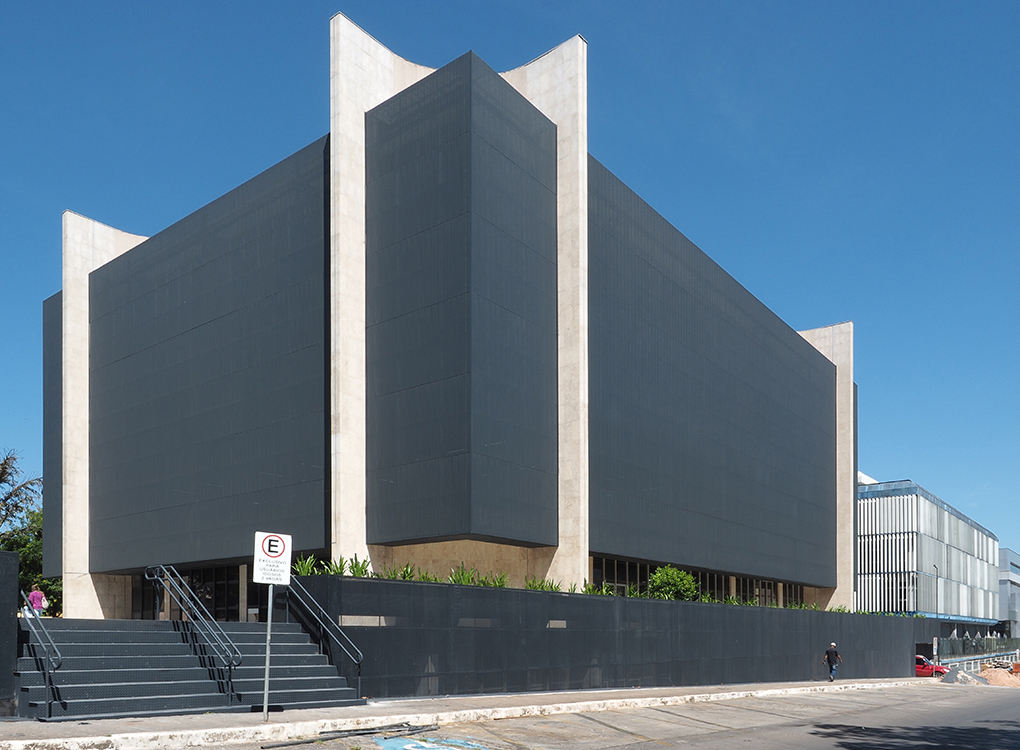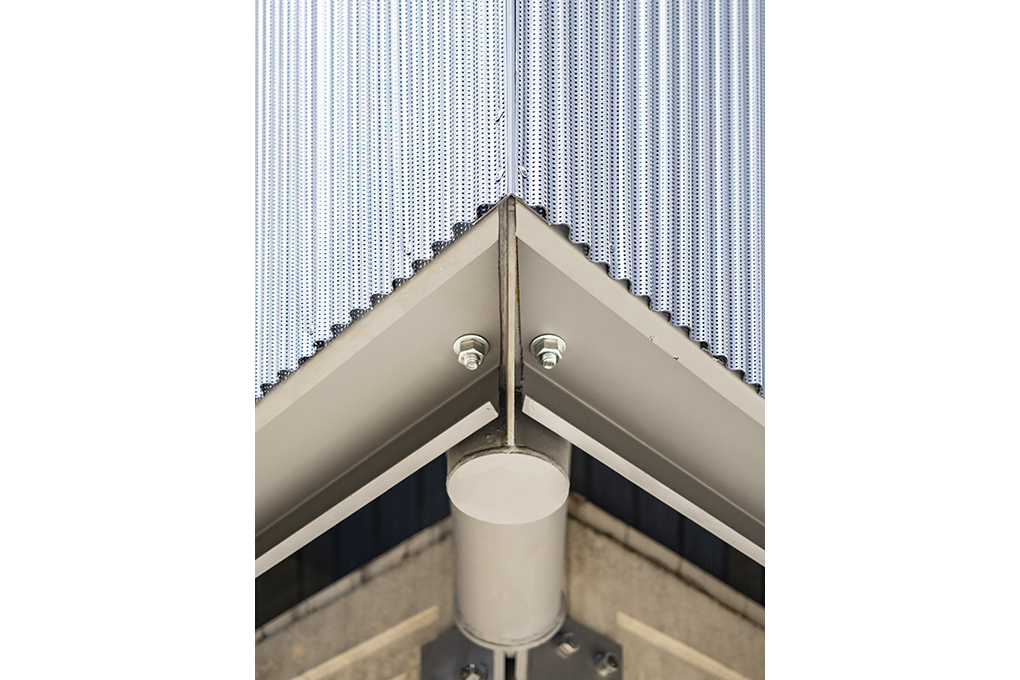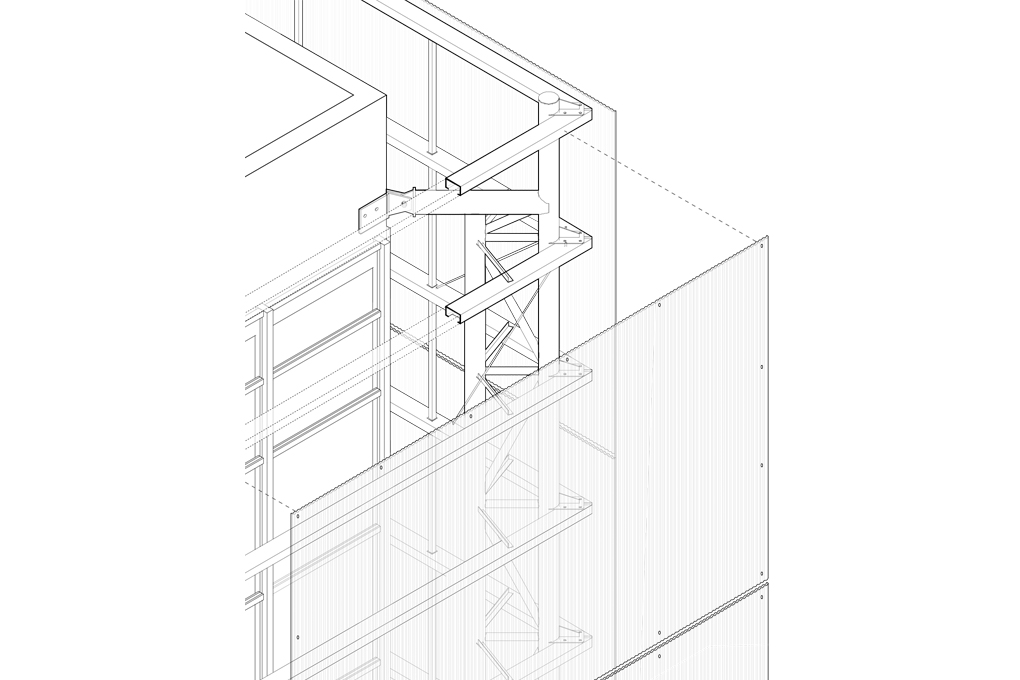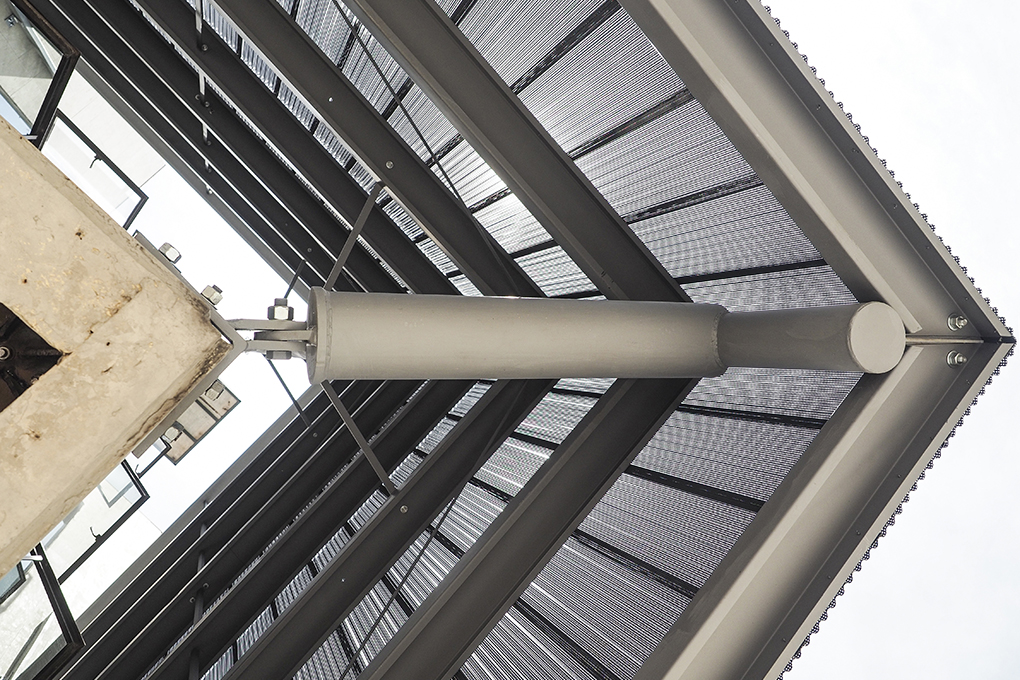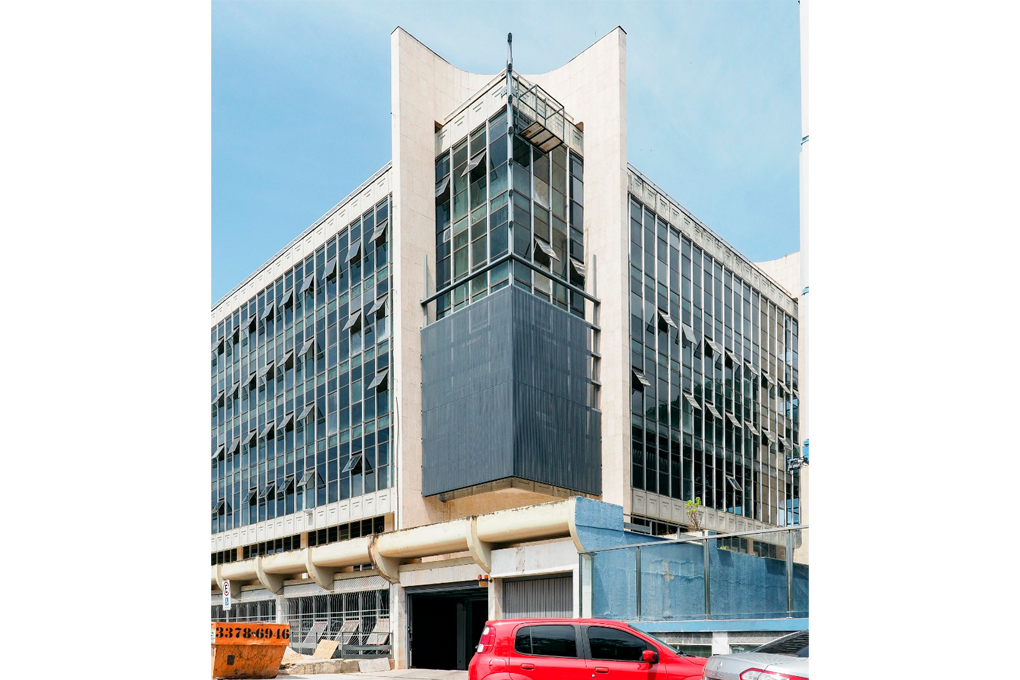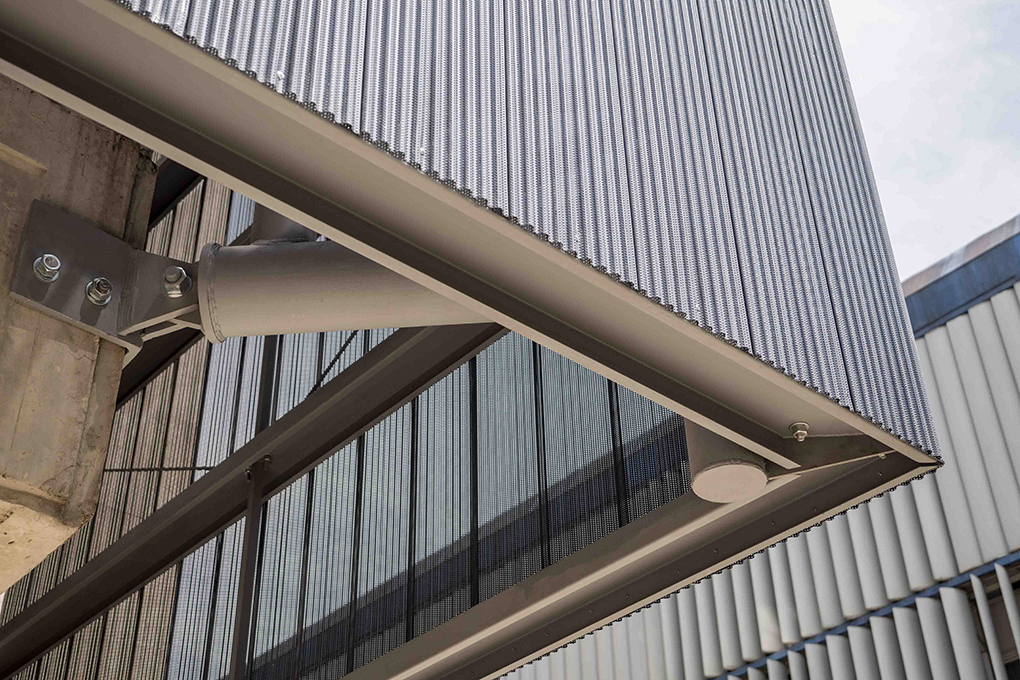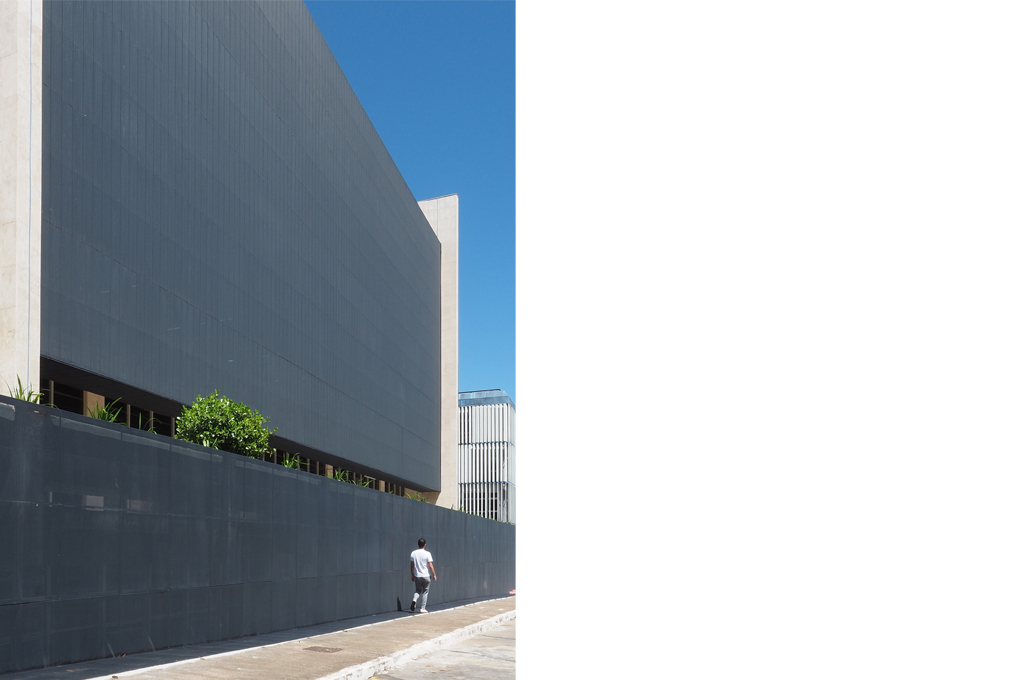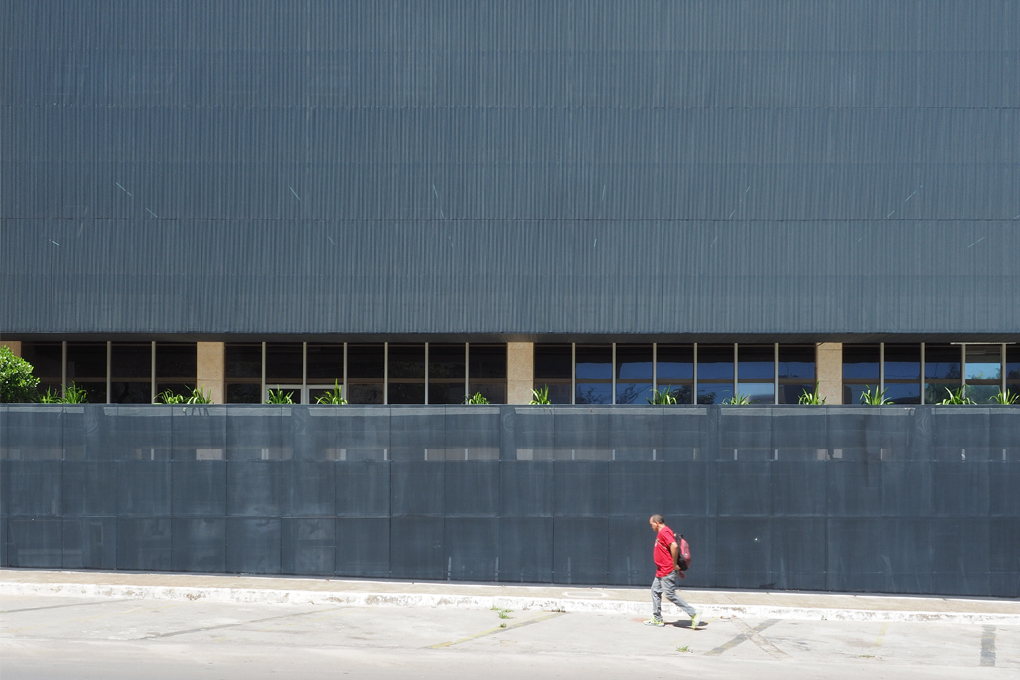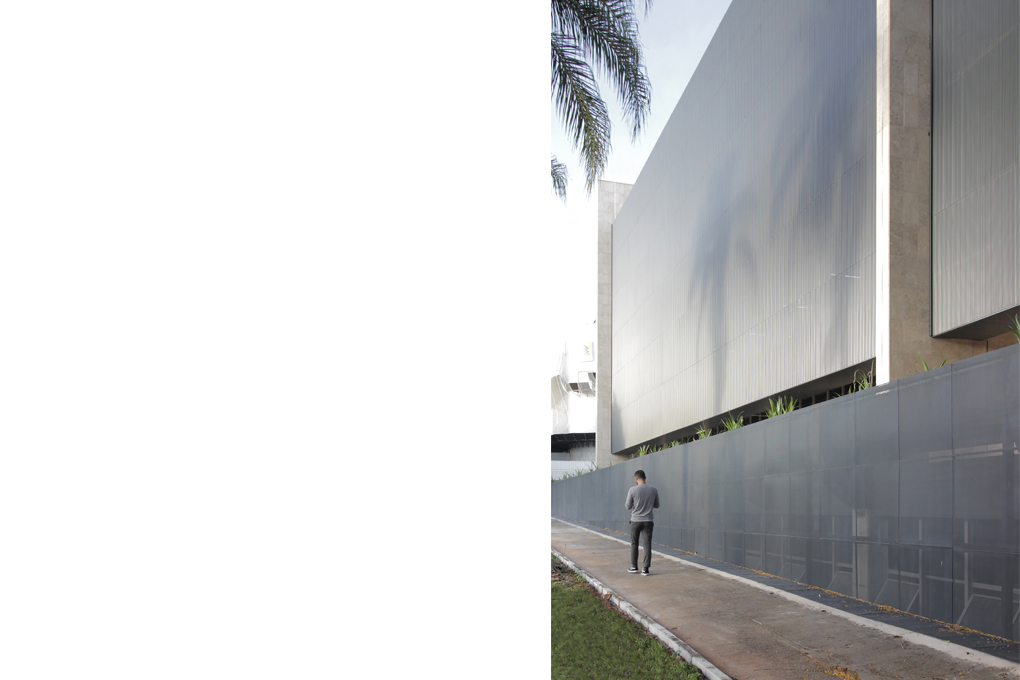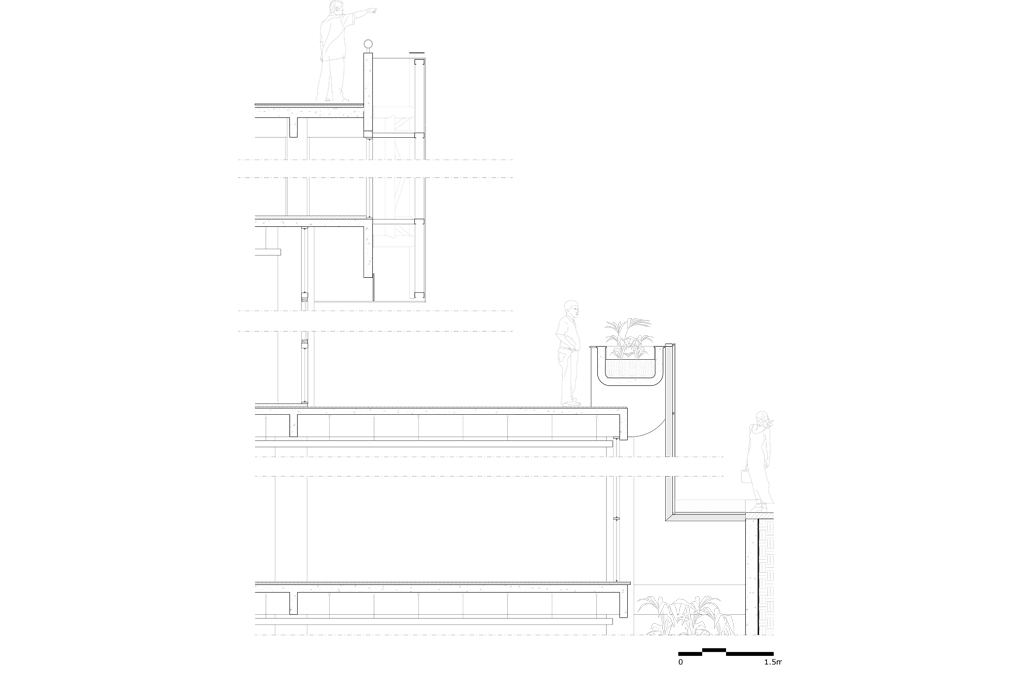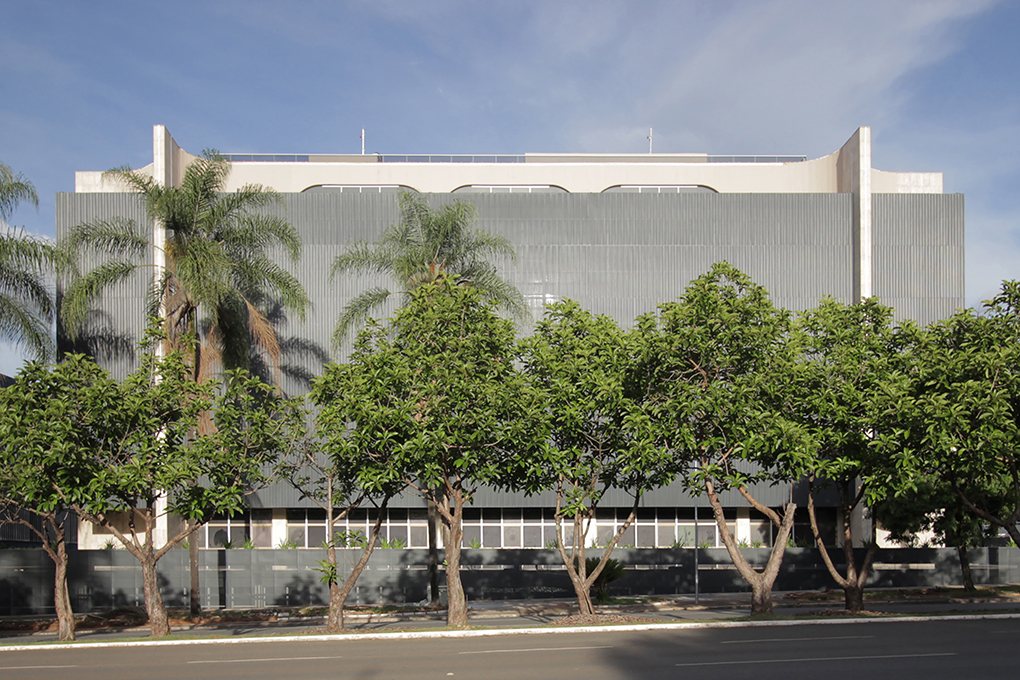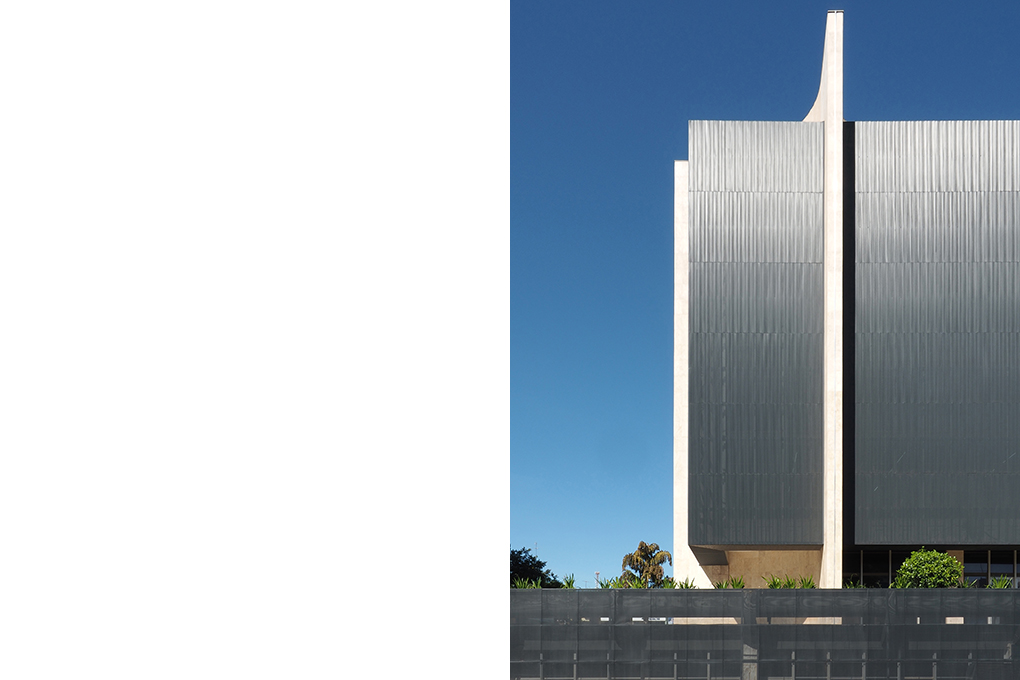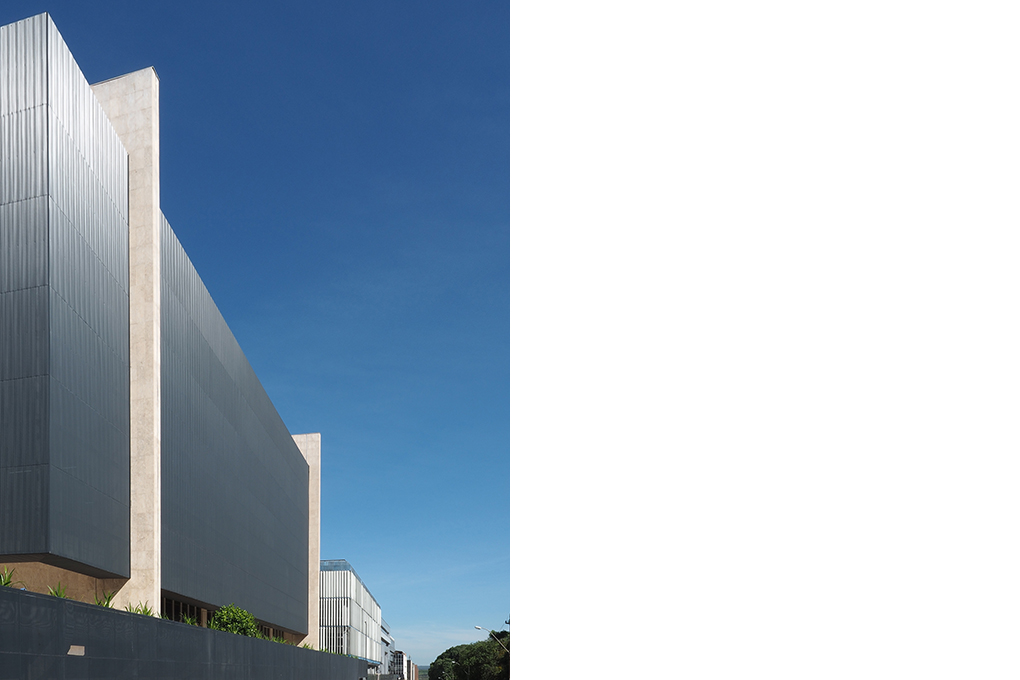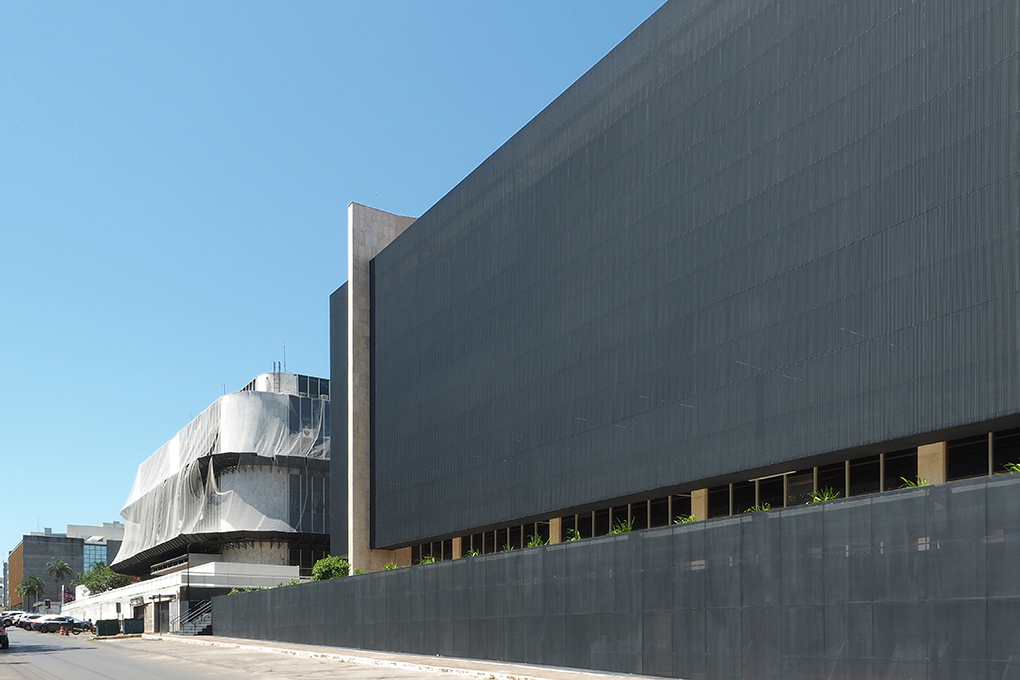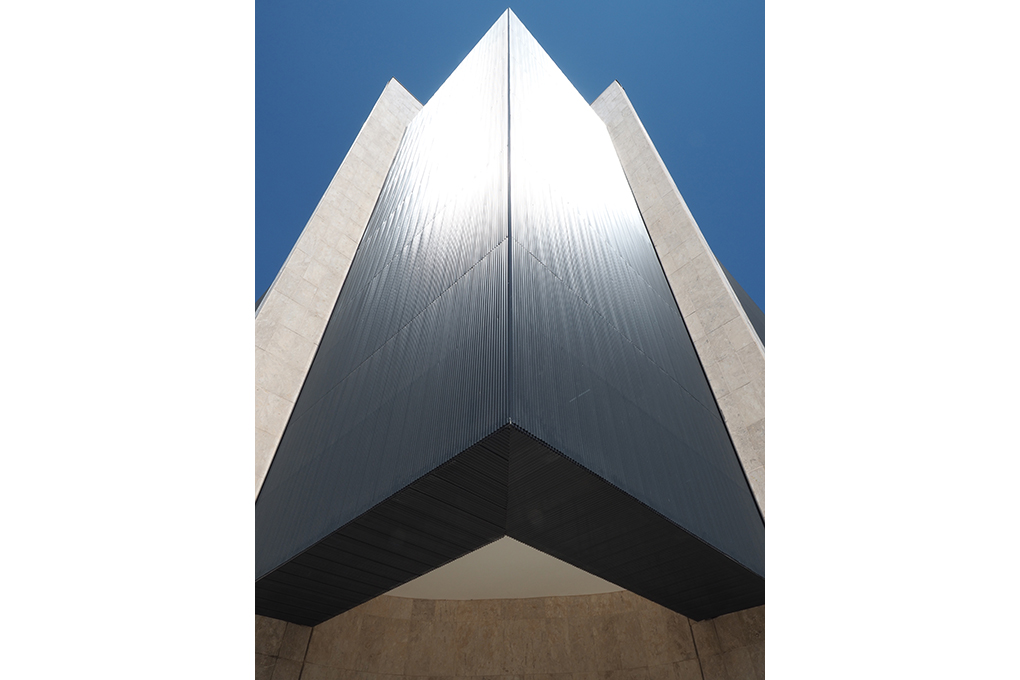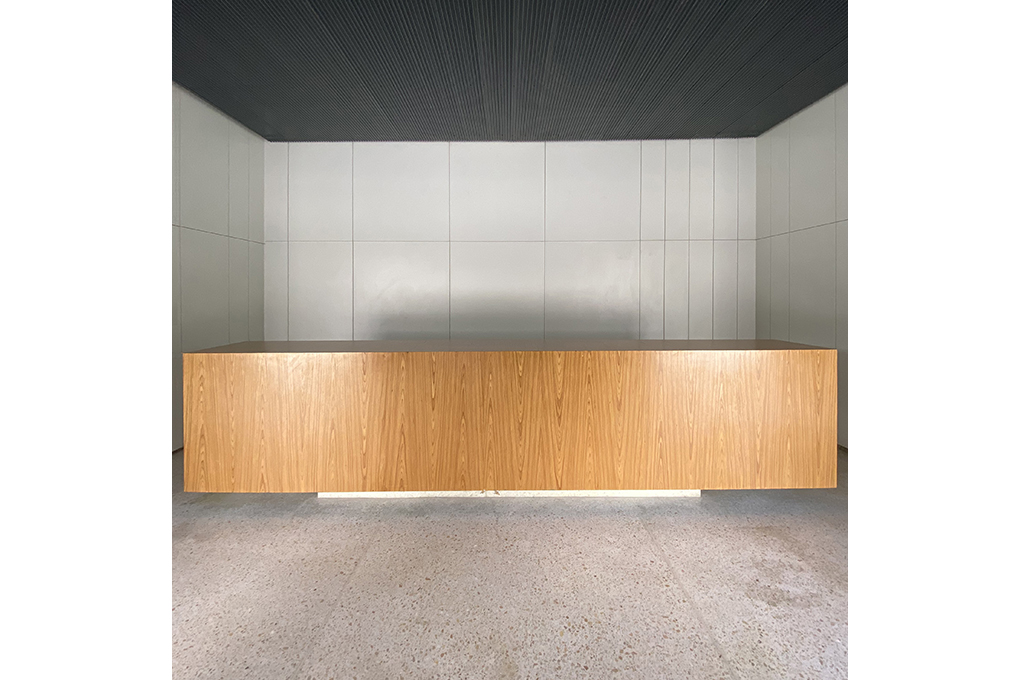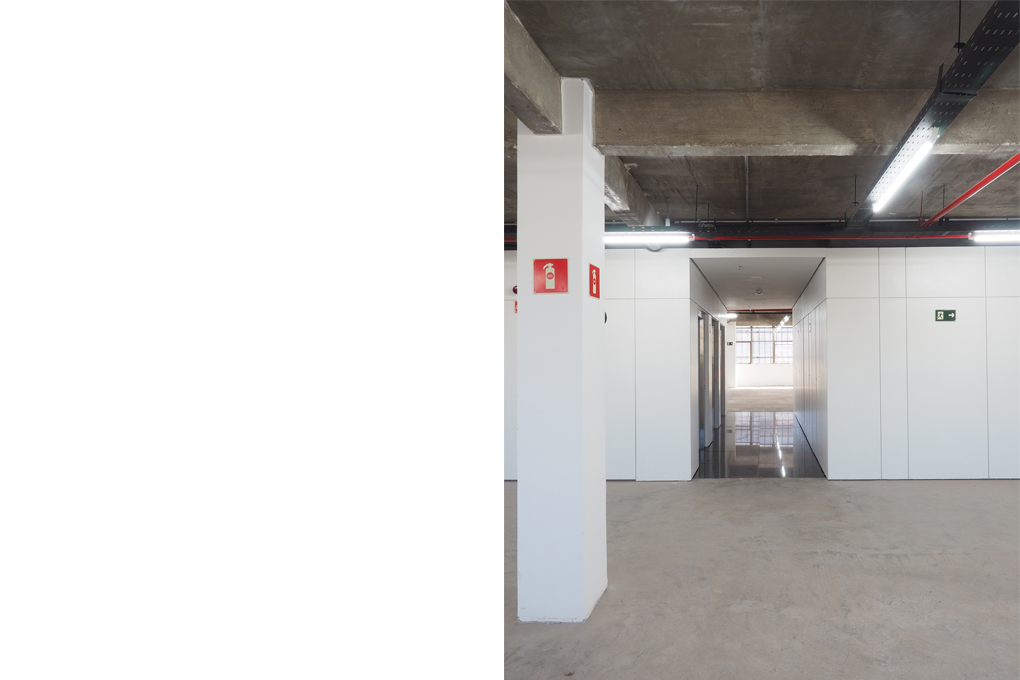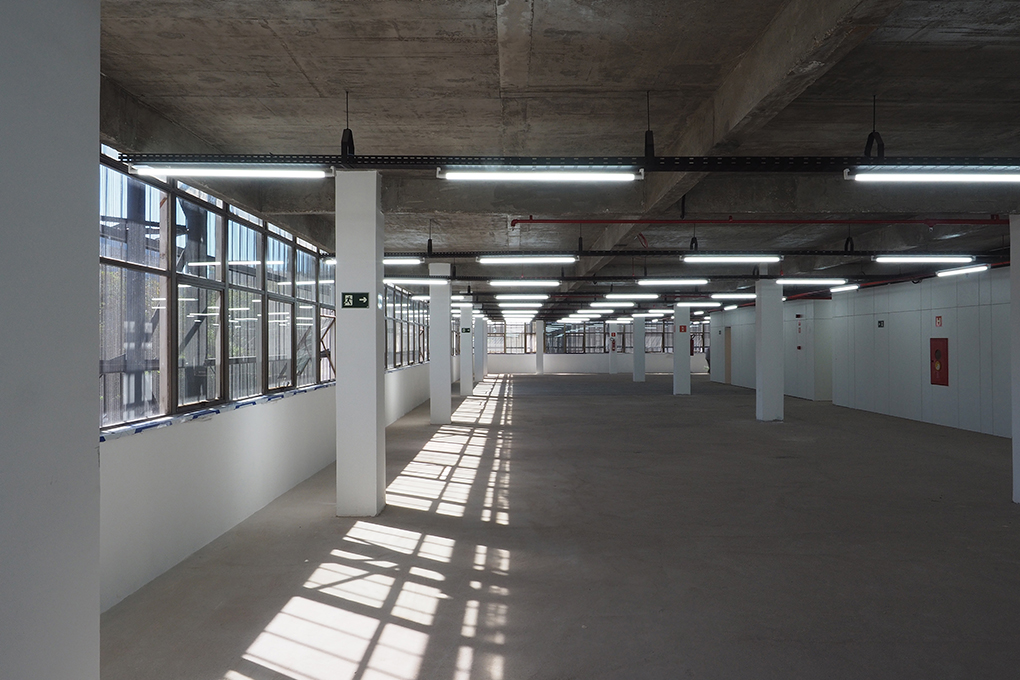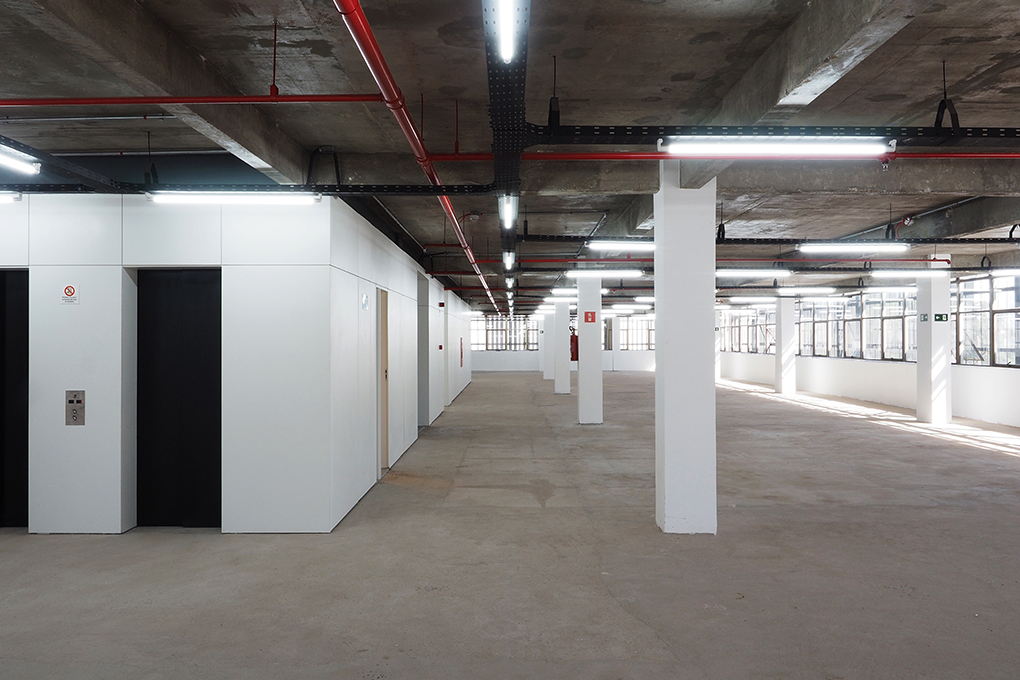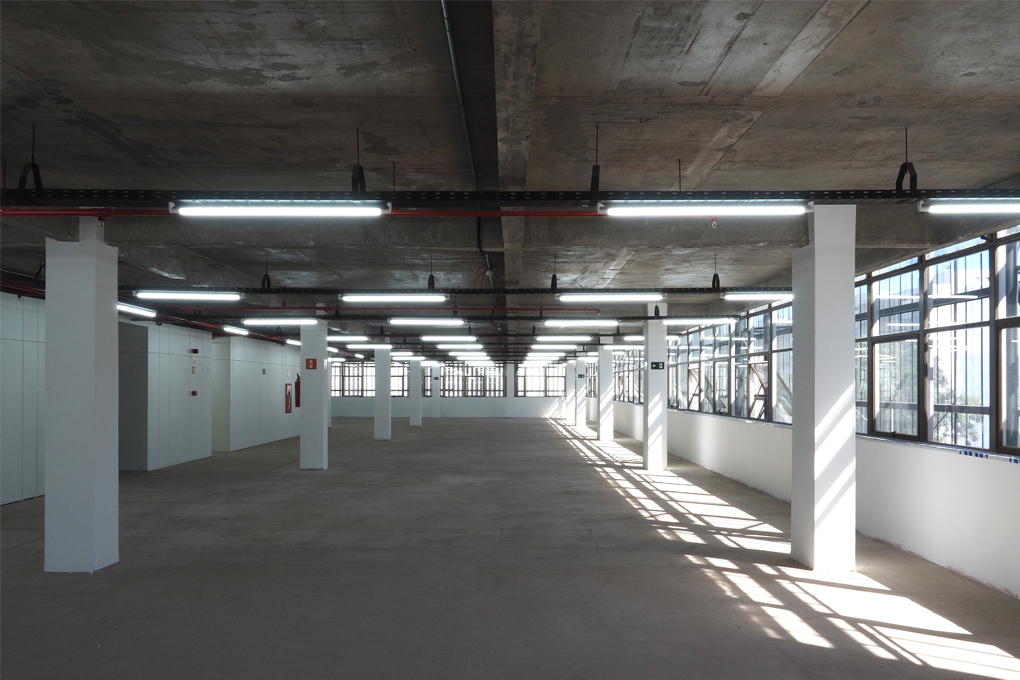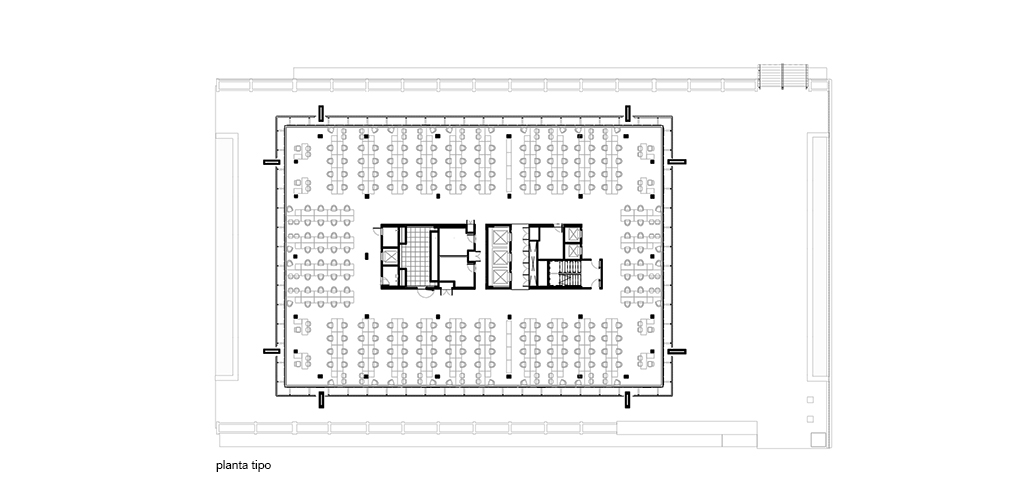Retrofit 515N Building
BUILT
BRASÍLIA-DF, 2019
The original building is located at Asa Norte in Brasilia and was built in 1978. The property was empty for a long period after its last lease by a single company. The building’s owner planned to adapt it to current fire-fighting and accessibility standards. In addition, the initial objective was also to overhaul much of the electrical installations and modernize the air conditioning system. We also identified two other important problems that became the main points of our intervention on the building’s facades: the overheating of the internal spaces caused by the direct exposure of the original glass-skin façades to sunlight and the poor state of the meeting between the building and the sidewalk public. Dark and translucent films have been applied to the inner faces of the glass over the years to try to minimize the problems of sunlight, in addition to curtains that existed on various internal sections of the facades. On the sidewalk, there were railings that were created to isolate the English well that was opened to the sidewalk and protected by guardrails.
Despite the problem of excessive exposure to the sun, the original façades were in good condition and functioning. In this way, we proposed to keep the original facade and “wrap” the entire building with a new facade that would only have the function of shading it. For this reason, the shading material should be light and have low maintenance requirements. The chosen material was the corrugated and perforated plate of the “miniwave” type, manufactured with a metallic alloy called “aluzinc” and painted at the factory with electrostatic painting. While the new “skin” of the building protects the interiors from excessive sunlight, its perforation allows the view to the outside. This solution also brought great savings for the operation of the air conditioning system. However, the great challenge of this proposal was to find the best way to fix the new facade to the existing building.
After studying initial options for complementary facade structures fixed directly to the beams of all floors (which would cause holes in the original facade that could result in leakage problems) we decided that the fixing solution should be supported only on the top exposed beams and base, without requiring any holes in the existing facade. For this, a 3D scan (point cloud) of the entire facade was made to outline the exact profile of the existing beam surface. The facade consultant proposed large flat metal trusses attached to the corners of the building and distributed over large flat areas. Their positions were defined according to the evaluation and verification of the calculation of the existing structure in order to distribute the weight in the best possible way, without the need for additional structural reinforcements. The existing large external pillars were also used to complement the new facade. This solution also had the objective of maintaining what we identified as the main intention of the plastic composition of the original facade, where the pillars are visible elements that “go beyond” the dark box around the standard floors. The original facade under the new facade was restored and maintained, the curtains and protective films were removed.
For the foundation of the building we have proposed a system of metallic elements attached to the original planters and facade. It is a solution that sought to combine the function of the grid to limit access (which already existed in another way in the original property) the function of sun protection that was necessary, in addition to the creation of a hollow floor over the English well, which would eventually expand the public sidewalk that was previously limited by the guardrail of the ventilation shaft at the edge of the land. Unlike the tower’s facade, the possibility of access for maintenance in the basement allowed us to use resistant perforated steel sheets that were painted on the spot (which also allows a new painting in the case of vandalism attacks). Therefore, sheets with the same drilling pattern and different thicknesses were used for the facade and floor. As in the tower, the original façades were kept under the new protective “skin” and the view to the outside is preserved.
The access square floor is of the original design and has been restored. We also use granilite (new) on the reception floor of the building and black granite at the elevator exits. The rest of the floors of the standard floors were left unfinished, ready for the tenant to choose which floor they would prefer to use.
Internally, we removed the entire ceiling to increase the ceiling height of the floors, leaving the slabs and beams of the existing structure visible. The new cable trays distribute the electrical installations, lighting, network cables, fire fighting pipes in addition to the pipes and drains of the air conditioning units that will be suspended. The central cores of all floors have been transformed into a single volume that concentrates the new installations shafts and the antechambers necessary to adapt the stairs to the current fire-fighting regulations.
Authors: Daniel Mangabeira, Henrique Coutinho and Matheus Seco
Project Coordinator: Victor Machado
Team: Guilherme Mahana, Giovanni Cristofaro, Bárbara Neumann and Júlia Huff (isometric drawings and details)
Built Surface: 10.200m2
Project: 2018
Construction: 2018-2019
Metal structure of the facade: Metier Sistemas de Fachadas
Instalations: Benfatto Projetos Integrados
Contractor: Espaço Y Engenharia
Photos: Victor Machado e Marina Lira
Retrofit 515N Building
BUILT
BRASÍLIA-DF, 2019
The original building is located at Asa Norte in Brasilia and was built in 1978. The property was empty for a long period after its last lease by a single company. The building’s owner planned to adapt it to current fire-fighting and accessibility standards. In addition, the initial objective was also to overhaul much of the electrical installations and modernize the air conditioning system. We also identified two other important problems that became the main points of our intervention on the building’s facades: the overheating of the internal spaces caused by the direct exposure of the original glass-skin façades to sunlight and the poor state of the meeting between the building and the sidewalk public. Dark and translucent films have been applied to the inner faces of the glass over the years to try to minimize the problems of sunlight, in addition to curtains that existed on various internal sections of the facades. On the sidewalk, there were railings that were created to isolate the English well that was opened to the sidewalk and protected by guardrails.
Despite the problem of excessive exposure to the sun, the original façades were in good condition and functioning. In this way, we proposed to keep the original facade and “wrap” the entire building with a new facade that would only have the function of shading it. For this reason, the shading material should be light and have low maintenance requirements. The chosen material was the corrugated and perforated plate of the “miniwave” type, manufactured with a metallic alloy called “aluzinc” and painted at the factory with electrostatic painting. While the new “skin” of the building protects the interiors from excessive sunlight, its perforation allows the view to the outside. This solution also brought great savings for the operation of the air conditioning system. However, the great challenge of this proposal was to find the best way to fix the new facade to the existing building.
After studying initial options for complementary facade structures fixed directly to the beams of all floors (which would cause holes in the original facade that could result in leakage problems) we decided that the fixing solution should be supported only on the top exposed beams and base, without requiring any holes in the existing facade. For this, a 3D scan (point cloud) of the entire facade was made to outline the exact profile of the existing beam surface. The facade consultant proposed large flat metal trusses attached to the corners of the building and distributed over large flat areas. Their positions were defined according to the evaluation and verification of the calculation of the existing structure in order to distribute the weight in the best possible way, without the need for additional structural reinforcements. The existing large external pillars were also used to complement the new facade. This solution also had the objective of maintaining what we identified as the main intention of the plastic composition of the original facade, where the pillars are visible elements that “go beyond” the dark box around the standard floors. The original facade under the new facade was restored and maintained, the curtains and protective films were removed.
For the foundation of the building we have proposed a system of metallic elements attached to the original planters and facade. It is a solution that sought to combine the function of the grid to limit access (which already existed in another way in the original property) the function of sun protection that was necessary, in addition to the creation of a hollow floor over the English well, which would eventually expand the public sidewalk that was previously limited by the guardrail of the ventilation shaft at the edge of the land. Unlike the tower’s facade, the possibility of access for maintenance in the basement allowed us to use resistant perforated steel sheets that were painted on the spot (which also allows a new painting in the case of vandalism attacks). Therefore, sheets with the same drilling pattern and different thicknesses were used for the facade and floor. As in the tower, the original façades were kept under the new protective “skin” and the view to the outside is preserved.
The access square floor is of the original design and has been restored. We also use granilite (new) on the reception floor of the building and black granite at the elevator exits. The rest of the floors of the standard floors were left unfinished, ready for the tenant to choose which floor they would prefer to use.
Internally, we removed the entire ceiling to increase the ceiling height of the floors, leaving the slabs and beams of the existing structure visible. The new cable trays distribute the electrical installations, lighting, network cables, fire fighting pipes in addition to the pipes and drains of the air conditioning units that will be suspended. The central cores of all floors have been transformed into a single volume that concentrates the new installations shafts and the antechambers necessary to adapt the stairs to the current fire-fighting regulations.
Authors: Daniel Mangabeira, Henrique Coutinho and Matheus Seco
Project Coordinator: Victor Machado
Team: Guilherme Mahana, Giovanni Cristofaro, Bárbara Neumann and Júlia Huff (isometric drawings and details)
Built Surface: 10.200m2
Project: 2018
Construction: 2018-2019
Metal structure of the facade: Metier Sistemas de Fachadas
Instalations: Benfatto Projetos Integrados
Contractor: Espaço Y Engenharia
Photos: Victor Machado e Marina Lira
